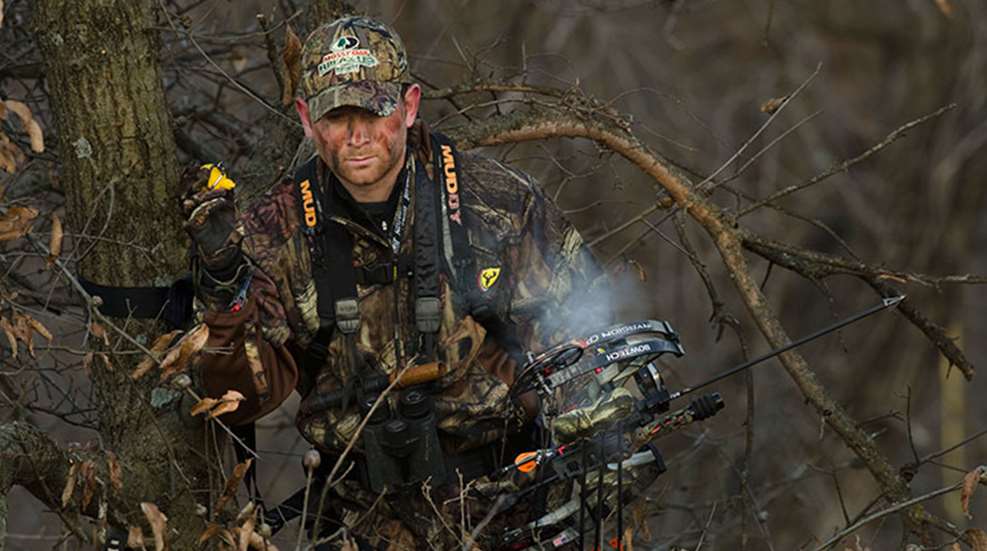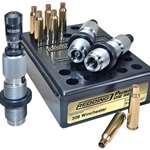
The guy in the fireworks shop thought I was buying smoke bombs for the Fourth of July. “These are great for kids, man,” he said. I nodded while thinking it would be weird to tell the too-tan dude with the collage of tats who has made a career out of selling bottle rockets that I really planned to use the smoke bombs to watch how the wind drifts around my treestands.
One stand in particular was ticking me off. It is an urban stand at the back end of a small field. When the leaves fall you can see a dozen homes from this stand. But it is at the intersection of two woodlots that lead to a swamp that meanders through housing developments. A particularly big buck has used this place for years and though he has become known no one has had a crack at him. This stand is the one weak link in this buck’s pattern, but at first light a group of does has winded me there twice. A west or northwest wind takes the wind over the field, but early in the morning cool air sinks down toward the swamp. There is a slight decline, but not so much that I thought there would be thermal action. I wanted to see if I could climb above the sinking air.
On a west wind I climbed the tree at first light last spring and lit a smoke bomb. At 15 feet up I could see the smoke first blowing east, but then sinking to the ground and drifting west. At 22 feet up the smoke found a true wind and was deep into the field and beyond the hill before it touched ground.
That’s wind for you. It doesn’t just follow the forecasted direction. When wind hits terrain it is more like water in a stream, minus the effect of gravity. It flows, swirls and rushes through narrow spots as it washes over and around terrain.
Know Your Thermals
Warm air rises and cool air falls. When cool morning air is warmed by sunshine, it warms and begins to rise as thermals. So an open slope with bare ground will warm faster than one covered in vegetation. This often means that air currents will fall downhill at dawn, as it’s typically the coldest part of of day, but when the sun touches and warms the slopes the thermals will turn uphill. This is especially true in steep terrain, but when the prevailing wind is light thermals can have a noticeable effect even in areas with slight elevation differences.
Wind Speed
It helps to categorize wind into speeds. Light air movement, such as thermals, is typically less than 5 mph; the medium movement of breezes might be 5-20 mph; incoming fronts and other weather can generate wind speeds over 20 mph. It’s important to consider speed because faster wind can swirl more violently on some terrain, whereas in spots where your scent might otherwise sink into a low-pressure area it can be truer.
Deer typically don’t like wind when it gets faster than 20 mph. Deer can’t smell as well when the wind is howling and can’t hear as well. Moving foliage can also make it hard for them to detect danger. For these reasons heavy wind will often reduce deer movement. The exception is buck movement during the rut. When does are in estrus bucks will move; however, on very calm days in my experience, some bucks move more slowly as they listen and wait for the light currents to bring scent to them.
Perhaps you’ve seen deer approaching from upwind of you but then saw them stop and lift their noses. This likely means they didn’t get a full whiff of you, but caught something. They lift their noses to sniff updrafts on calm days. Your scent might be pooling and swirling near your stand. Near a field edge sunlight might be warming the earth and causing a slight updraft that is circulating your scent in the trees. These are all factors you have to consider when checking the weather and hanging stands. These micro-factors are why I use smoke bombs to check wind movement.
Topography
The wind circulation between mountains and valleys is the most important local factor affecting winds. Strong updrafts, downdrafts and eddies can develop as the air flows over hills and down valleys. This often makes low spots impossible to put a stand in, as the wind will sink and even swirl around a bottom. Picture water running into a hill. Some, if it has enough speed, might flow right over the hill, but some of the current will likely turn and perhaps swirl into eddies. It is often necessary to move uphill until you can find a true and more stable wind.
How Deer Move with Wind
Lone deer typically bed with the wind at their backs and use their eyes to watch in front. When several deer bed together they will often lay facing in different directions to see danger coming. When they get up to move deer often move downwind. When bucks cruise for does they generally prefer to move quartering downwind rather than to move with their noses pointed into the wind. This is especially true for mature bucks. It helps them cover more ground as they search for estrous does. Some bucks have even learned that when wind is blowing down the rows of a cornfield they can walk the downwind side to check for bedded estrous does.
For a similar reason you’ll often find there is more deer movement on the upwind side of lakes and swamps, as deer learn that danger isn’t likely to come from such places. This makes hanging a stand along the western edge (or whatever side the prevailing wind in your region typically comes from) of such a place a good idea, as you can hunt the better trails while your scent blows out onto the water.
There are too many variables with wind and terrain to explore here, but if you apply these general rules to your woods you’ll see the places where, though they might have a lot of sign, the winds aren’t stable enough to hunt. Once you scratch those places off your map you’ll find it easier to see the places where a cruising buck will be vulnerable. You’ll then need to consider how the micro-terrain (trees, edges, hills) will affect the wind in a particular spot.
Now that I know to climb higher in that stand I mentioned, I’ll wait for the right wind during this autumn’s rut to be the one who gets that suburban buck.





































